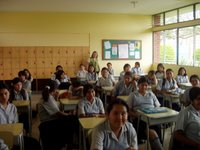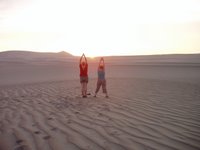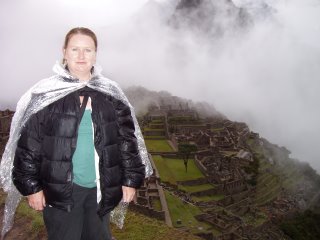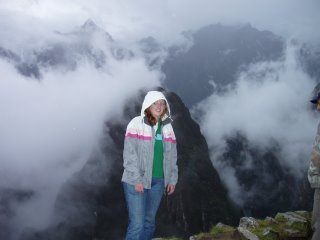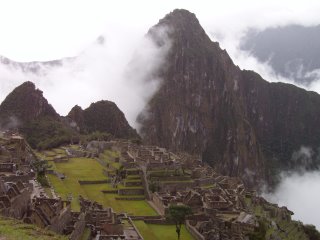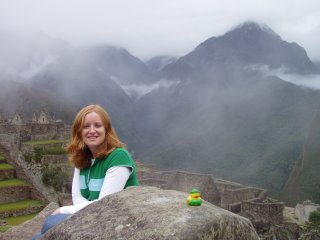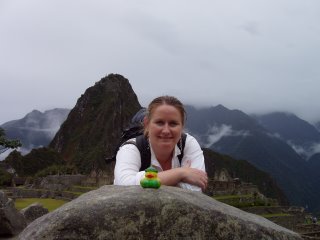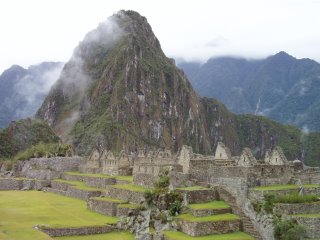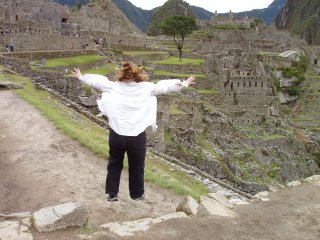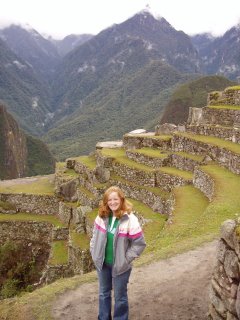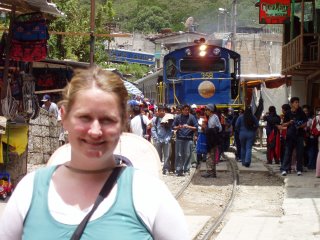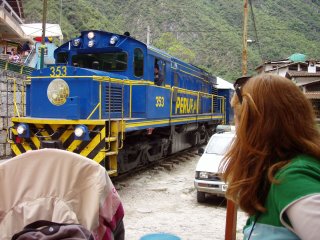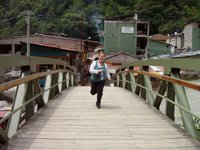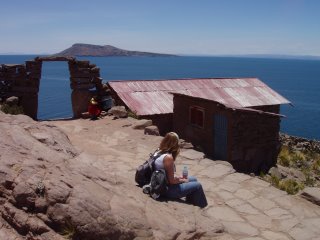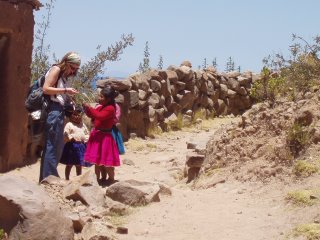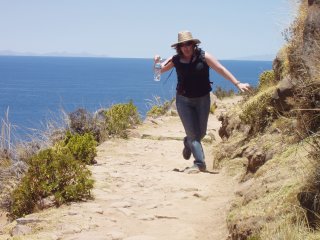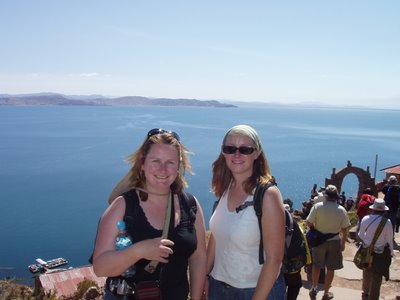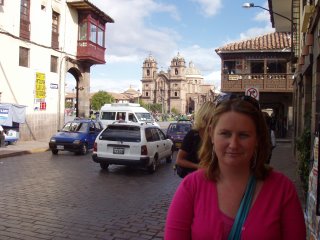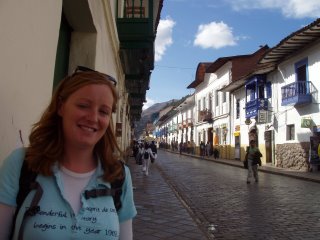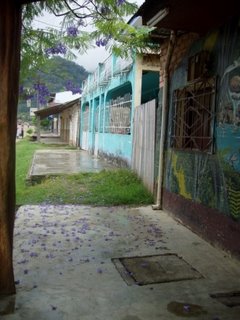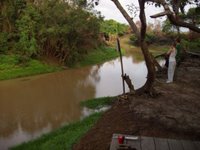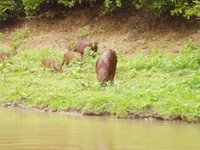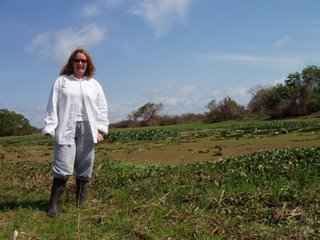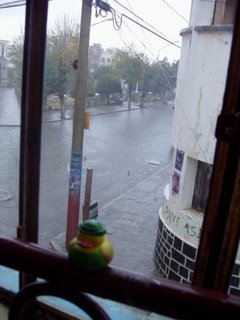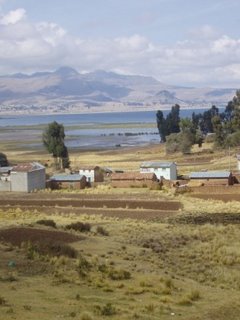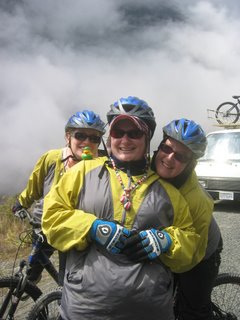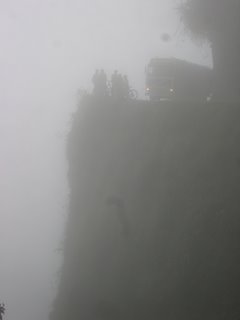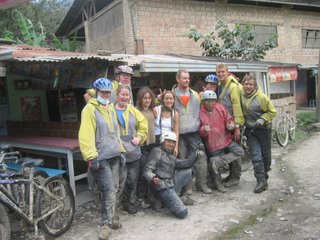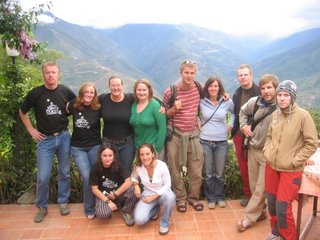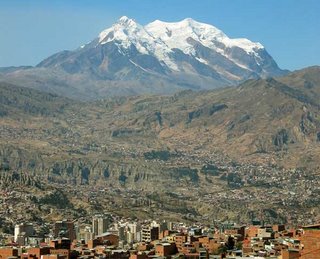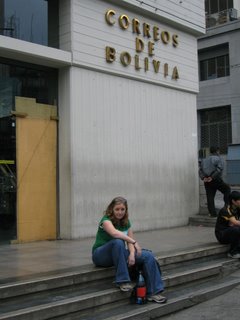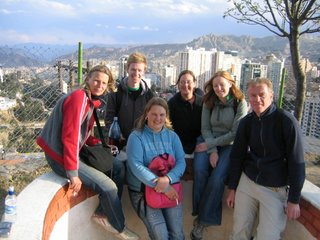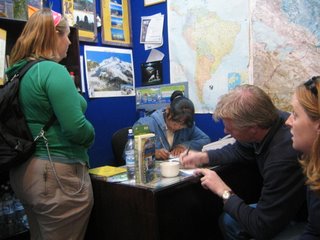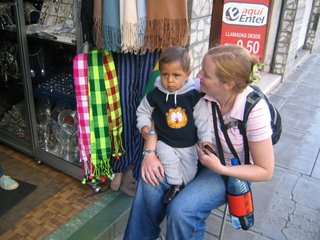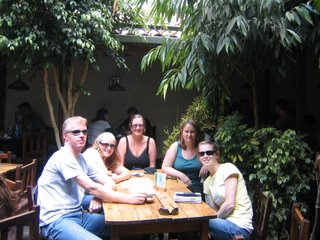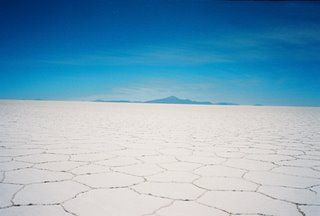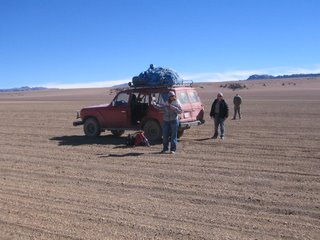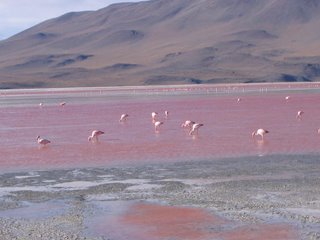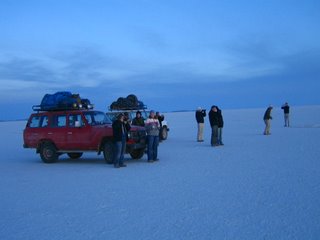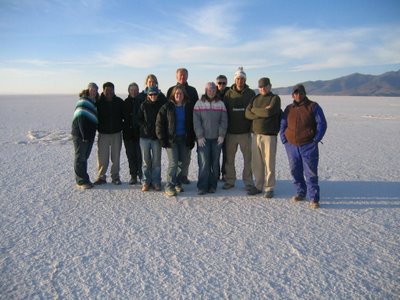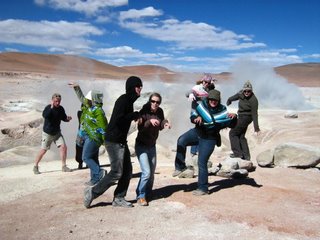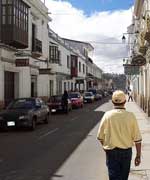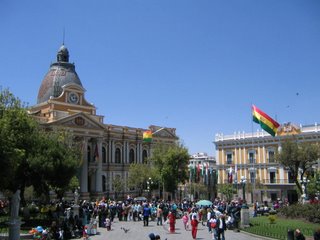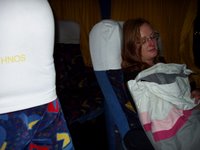
Arequipa is known as the white city due to sillar - a light coloured volcanic rock that dazzles in the sun and that is used in the huge cathedral on Plaza de Armas and other colonial churches and buildings across the city.
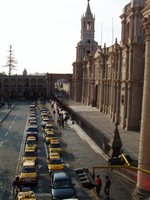
After a day of rest, we took a two day trip to the Canon del Colca, the worlds second deepest canyon at 3191mtrs. We stayed in Chivay the first night and after a dip in the hot srpings nearby we were entertained by local dances and music during dinner (think a peruvian bunratty !).
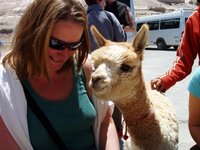
The second morning we were up at 5am, breakfast at 5.30am and left at 6am for our 2 hr drive to reach Cruz del Condor. We were not disppointed either, after waiting 20 minutes, we saw 4 condors flying low across the canyon, in total I think we saw 7 condors. These birds have a wing span of 3 mtrs and are very impressive as they glide across the canyon.
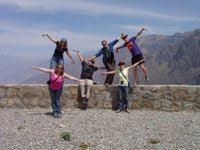
Another day of rest saw us visit the local Monastery - so called by the locals although its actually a convent, the "old part" is now open to the public and gives a glimpse of the life the nuns had back in the 1600´s - the second girl of every well-to-do family had to become a nun in those days !!! The eldest boy got the land/money and the second boy either had to join the military or become a priest !
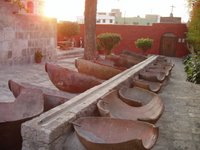
Another uncomfortable overnight bus ride brought us to Nazca where we saw the famous lines, some of us from terra ferma and others from a tiny 4 seater (incl the pilot) plane. We travelled from Nazca to Ica (2hrs) in a big old american style car, emerald green and rusted brown. a true antique of americana, which fitted 6 of us in not including the driver (4 of us in the back and 2 in front with the driver), and all 6 backpacks fitted in his boot along side his sparewheel.
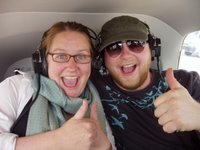
We can currently be found in Huacachina (4 hrs south of Lima), in a little oasis surrounded by huge sanddunes (great for sandboarding and driving sand buggies) ; Sancha was also found tutoring english to local secondary school girls for a day (nice school, had an outdoor pool, posh!); our really cheap hostel has a lovely back garden for sunning oneself and a pool to cool down when the afternoon sun gets a bit too hot for us !!
